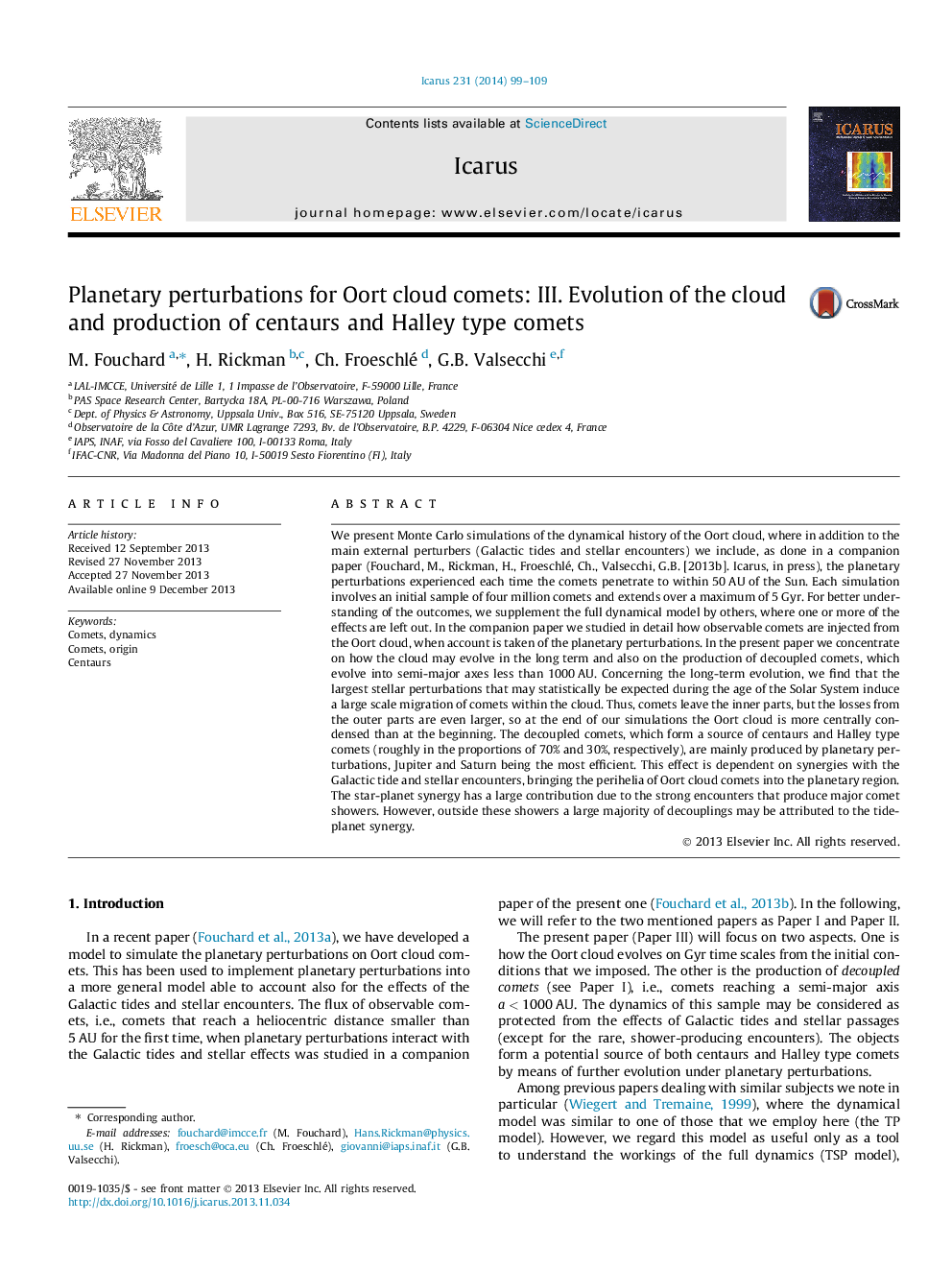| کد مقاله | کد نشریه | سال انتشار | مقاله انگلیسی | نسخه تمام متن |
|---|---|---|---|---|
| 8138564 | 1523559 | 2014 | 11 صفحه PDF | دانلود رایگان |
عنوان انگلیسی مقاله ISI
Planetary perturbations for Oort cloud comets: III. Evolution of the cloud and production of centaurs and Halley type comets
دانلود مقاله + سفارش ترجمه
دانلود مقاله ISI انگلیسی
رایگان برای ایرانیان
موضوعات مرتبط
مهندسی و علوم پایه
علوم زمین و سیارات
علوم فضا و نجوم
پیش نمایش صفحه اول مقاله

چکیده انگلیسی
We present Monte Carlo simulations of the dynamical history of the Oort cloud, where in addition to the main external perturbers (Galactic tides and stellar encounters) we include, as done in a companion paper (Fouchard, M., Rickman, H., Froeschlé, Ch., Valsecchi, G.B. [2013b]. Icarus, in press), the planetary perturbations experienced each time the comets penetrate to within 50Â AU of the Sun. Each simulation involves an initial sample of four million comets and extends over a maximum of 5Â Gyr. For better understanding of the outcomes, we supplement the full dynamical model by others, where one or more of the effects are left out. In the companion paper we studied in detail how observable comets are injected from the Oort cloud, when account is taken of the planetary perturbations. In the present paper we concentrate on how the cloud may evolve in the long term and also on the production of decoupled comets, which evolve into semi-major axes less than 1000Â AU. Concerning the long-term evolution, we find that the largest stellar perturbations that may statistically be expected during the age of the Solar System induce a large scale migration of comets within the cloud. Thus, comets leave the inner parts, but the losses from the outer parts are even larger, so at the end of our simulations the Oort cloud is more centrally condensed than at the beginning. The decoupled comets, which form a source of centaurs and Halley type comets (roughly in the proportions of 70% and 30%, respectively), are mainly produced by planetary perturbations, Jupiter and Saturn being the most efficient. This effect is dependent on synergies with the Galactic tide and stellar encounters, bringing the perihelia of Oort cloud comets into the planetary region. The star-planet synergy has a large contribution due to the strong encounters that produce major comet showers. However, outside these showers a large majority of decouplings may be attributed to the tide-planet synergy.
ناشر
Database: Elsevier - ScienceDirect (ساینس دایرکت)
Journal: Icarus - Volume 231, 1 March 2014, Pages 99-109
Journal: Icarus - Volume 231, 1 March 2014, Pages 99-109
نویسندگان
M. Fouchard, H. Rickman, Ch. Froeschlé, G.B. Valsecchi,